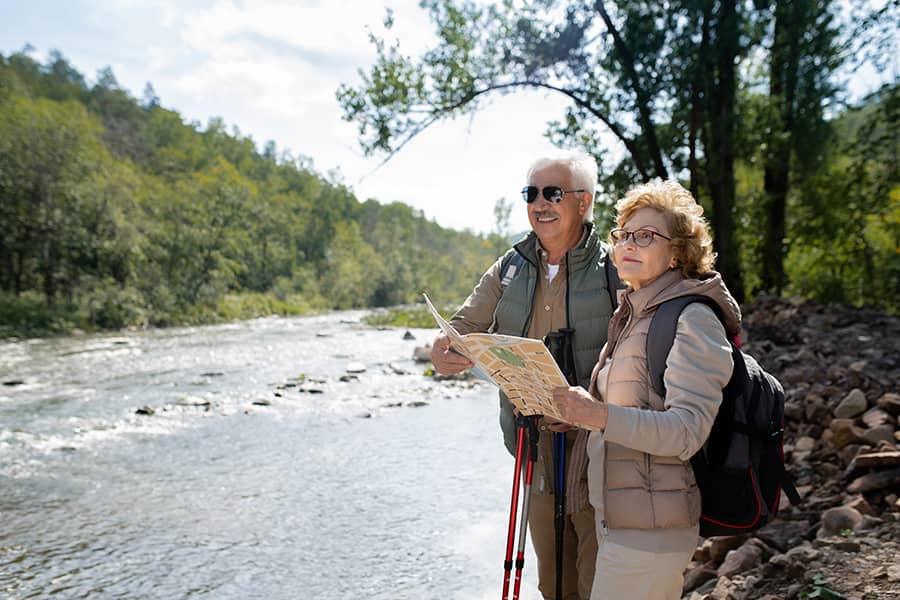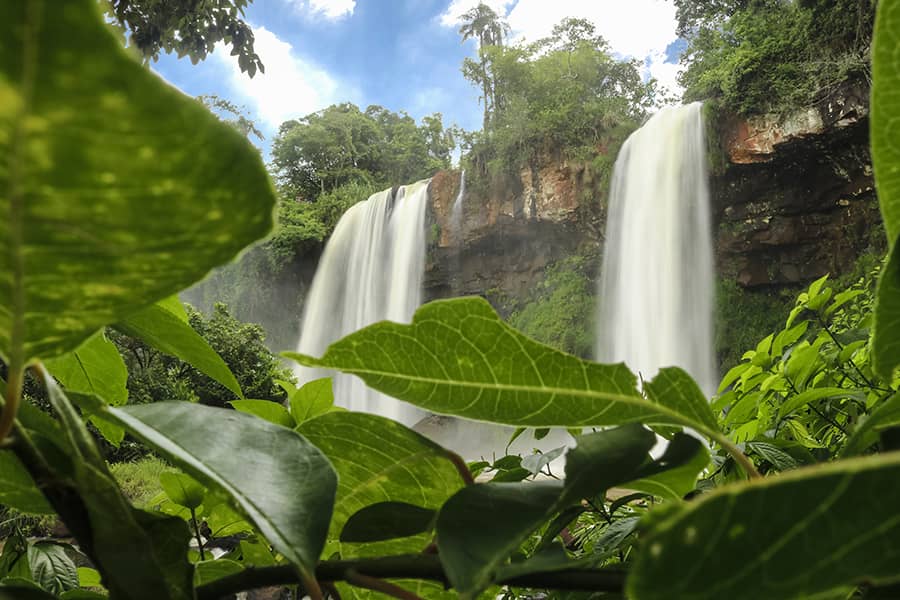Exploring the Benefits of Forest Bathing for Stress Relief

Introduction: Understanding Forest Bathing
Forest bathing, or shinrin-yoku as it is known in Japan, invites individuals to immerse themselves in the sights, sounds, and scents of nature. This practice transcends mere hiking; it’s about forging a deeper connection with the environment around us. As you wander through the dappled light among ancient trees and lush undergrowth, your senses awaken to an orchestra of rustling leaves and birdsong that calms the mind and soothes the soul.
Engaging with nature in this mindful way has been shown to lower cortisol levels associated with stress while promoting feelings of peace and well-being. Emerging research reveals that even just a short period spent enveloped by greenery can lead to improved mood states and reduced anxiety. In our fast-paced world dominated by screens and urban noise, forest bathing serves as a gentle reminder of life’s simplicity—a chance to reconnect not only with nature but also with ourselves, rejuvenating our spirits amidst life’s chaos.
What is Forest Bathing?
Forest bathing, or Shinrin-yoku as it’s known in Japan, is much more than a leisurely stroll through the woods; it’s a transformative practice that immerses you in the healing ambiance of nature. The experience invites participants to engage their senses fully: inhaling the earthy scents of moss and pine, listening to the rustle of leaves and distant bird songs, while feeling the cool breeze brush against their skin. This sensory connection cultivates mindfulness, pulling your focus away from daily stresses and fostering a deep appreciation for the natural world surrounding you.
Recent research highlights that forest bathing can significantly lower cortisol levels, promoting relaxation and emotional well-being. Even more intriguing is how this practice seems to enhance creativity and clarity of thought—qualities often muddled by constant digital distractions. By slowing down amidst towering trees and vibrant foliage, individuals often find not just solace but fresh perspectives on personal challenges. Forest bathing encourages a symbiotic relationship with nature; as we care for our mental health through these serene experiences, we also cultivate an awareness that inspires stewardship for our environment. So next time stress creeps in, consider stepping into a forest—it might just be the sanctuary your mind needs.
Historical Background of Forest Bathing
The practice of forest bathing, or Shinrin-yoku, has roots dating back to the early 1980s in Japan. It was officially recognized by the Japanese government as a therapeutic practice aimed at enhancing physical and mental well-being through immersive experiences in nature. While its formal introduction is relatively recent, the underlying philosophy stems from ancient Japanese beliefs that emphasize harmony with nature, which have been integral to their culture for centuries. The act of slowing down and connecting with the natural environment echoes practices observed in various indigenous cultures around the world, where people have long understood the healing power of forests.
Western interest in forest bathing gained momentum in recent years as scientific studies began to illuminate its numerous health benefits. Researchers have uncovered a plethora of advantages linked to this simple yet profound practice—including lower cortisol levels, improved mood, and even enhanced immune function. Some studies suggest that breathing in phytoncides—natural compounds released by trees—can significantly bolster our body’s stress response. This reembracing of nature resonates particularly strongly today as urbanization increases; it serves not only as a remedy for modern anxieties but also as a powerful reminder of our intrinsic connection to the earth—a bond that fosters resilience amidst life’s challenges.
Benefits for Mental Health and Well-being
Immersing oneself in nature through forest bathing is more than just a soothing escape; it actively engages our senses and promotes mental well-being. The act of being surrounded by trees, with their complex tapestry of sounds, sights, and smells, encourages mindfulness—a state that has been shown to reduce anxiety and depression. This sensory-rich experience not only allows us to reconnect with the present moment but also fosters a sense of belonging within the natural world.
Moreover, research indicates that spending time in wooded areas can lead to increased levels of serotonin, a neurotransmitter linked to happiness and mood regulation. The practice encourages deep breathing and gentle movement, both of which are naturally calming for the mind. As we inhale the fresh air laden with phytoncides—natural compounds released by plants—we’re not just reducing stress hormones; we’re also boosting our immune system, reinforcing the idea that taking care of our physical health directly supports mental clarity and resilience. Embracing even short windows of forest bathing can instill in us a profound sense of peace that lasts long after we’ve left the tranquility of the trees behind.
Physical Health Benefits of Nature Immersion
Immersing ourselves in nature has profound physical health benefits, which often go overlooked in our fast-paced, technology-driven lives. Studies reveal that spending time in green spaces can lower blood pressure, regulate heart rates, and even enhance immune function. The vibrant ecosystem around us not only calms the mind but also activates biological processes that promote well-being—like the release of natural killer cells that bolster our body’s defense against illness.
Moreover, forest bathing encourages movement and physical activity in ways that are often more enjoyable than traditional exercise regimes. This gentle yet invigorating engagement with nature fosters a sense of playfulness and curiosity, leading to increased physical activity without the strain of rigorous workouts. Furthermore, exposure to sunlight during these outdoor excursions aids vitamin D synthesis—which is crucial for bone health—while also helping to stabilize mood through serotonin production. By immersing ourselves regularly in nature’s embrace, we cultivate both resilience and vitality within our bodies.
How to Practice Forest Bathing Effectively
To practice forest bathing effectively, start by immersing yourself fully in the natural environment. Leave your phone and other distractions behind to enhance your connection with the surroundings. Instead of rushing through trails, slow down your pace; allow each step to draw you deeper into the atmosphere of the woods. Pay attention to the minute details—feel the texture of leaves underfoot, notice how sunlight filters through branches, and listen for the gentle rustle of wildlife hidden among ferns.
Engage all your senses as you explore. Breathe deeply, inhaling not only the fresh air but also seeking out earthy scents that ground you further in nature—a balance between damp soil and blooming wildflowers can evoke a sense of tranquility unique to each season. Try practicing mindfulness techniques such as guided meditation or stretching in a secluded glen, allowing nature’s rhythm to sync with your own heartbeat. This intentional focus fosters a profound sense of belonging and peace that carries well beyond your woodland sojourns into daily life challenges.
Incorporating Mindfulness in Nature Experiences
As we immerse ourselves in the tranquility of nature, incorporating mindfulness into our forest bathing practices can elevate the experience to transformative levels. This means not just visiting a serene woodland but fully engaging our senses to absorb the sights, sounds, and scents surrounding us. Picture yourself pausing at a moss-covered log, feeling its texture beneath your fingertips while inhaling the earthy aroma of damp soil. By honing in on these sensory details, we cultivate a deeper awareness that fosters peace and dispels mental clutter.
Moreover, allowing yourself to be present in nature opens pathways for emotional healing and introspection. Instead of merely rushing through trails or snapping photos for social media highlights, try embracing moments of stillness—meditating by a stream or observing wildlife without distraction. This practice invites a dialogue between you and the natural world; it nurtures an innate connection that rejuvenates not only your spirit but also sharpens your intuition about life’s myriad challenges. Through mindfulness in these serene settings, we discover that nature has much to teach us about resilience and serenity amidst the chaos of modern living.
Recommendations for Locations to Explore
When it comes to forest bathing, the location can significantly enhance your experience. Consider exploring old-growth forests, where the towering trees and rich biodiversity create a serene atmosphere that beckons tranquility. Places like the Redwoods in California or Washington’s Olympic National Park provide not just beauty but also a sense of grounding among immense living beings that have stood for centuries. The whisper of ancient flora encourages mindfulness as you navigate through the lush undergrowth.
If you’re seeking a more diverse setting, temperate rainforests offer an enchanting experience. Locations such as Costa Rica’s Monteverde Cloud Forest are bursting with unique microorganisms and vibrant plant life, creating an interactive environment perfect for immersing oneself in nature’s splendor. Listen closely for the symphony of birds and insects—each sound crafted by nature itself—and allow these melodies to wash over you, melting away stress. As you wander these stunning landscapes, remember that different terrains bring distinct sensations; whether it’s soft moss underfoot or rough bark at your fingertips, each element invites deeper connections with both yourself and the world around you.
Challenges and Considerations When Forest Bathing
While forest bathing offers numerous benefits for stress relief, navigating the practice isn’t without its challenges. One common hurdle is accessibility; not everyone lives near a forested area, which can limit opportunities for immersive natural experiences. Those in urban settings may need to travel significant distances to find suitable environments, and this can add stress rather than alleviating it. For some, even when nature is nearby, the allure of technology or busyness can distract from the full experience.
Moreover, immersing oneself in nature requires a shift in mindset that many may overlook. It’s easy to bring the chaos of daily life into these serene settings—whether through constant phone notifications or lingering worries about unfinished tasks. To truly benefit from forest bathing, practitioners must cultivate mindfulness and set aside time for this rejuvenating escape fully undistracted by external stimuli. This intentional separation allows individuals to reconnect with their surroundings deeply—a crucial step toward unlocking the profound mental and emotional healing that nature provides.
Conclusion: Embracing Nature for Stress Relief
As we navigate the relentless pace of modern life, embracing nature becomes more than just a fleeting escape; it transforms into an essential practice for our well-being. Each moment spent in a forest or serene green space allows us to reconnect with our inner selves, shedding layers of stress that have accumulated in our busy minds. The act of simply being among towering trees and listening to the gentle rustle of leaves can create a profound sense of grounding—a reminder that we are part of something larger, where tranquility thrives.
Moreover, forest bathing is not just about physical presence; it invites us to engage all our senses. From the earthy scents wafting through the air to the vibrant colors dancing before our eyes, each element plays a role in calming the mind and refreshing the spirit. This sensory immersion boosts not only emotional resilience but also enhances creativity and problem-solving abilities—a remarkable benefit in today’s fast-paced world. By truly immersing ourselves in nature’s embrace, we unlock a treasure trove of peace and clarity that carries over into our daily lives, reminding us that solace is often just a short walk away from wherever we may be.
Recent Posts
-
Advice for achieving a healthier and more joyful lifestyle
September 16, 2024 -
Brazil: The premier location for thrilling adventures
September 14, 2024




